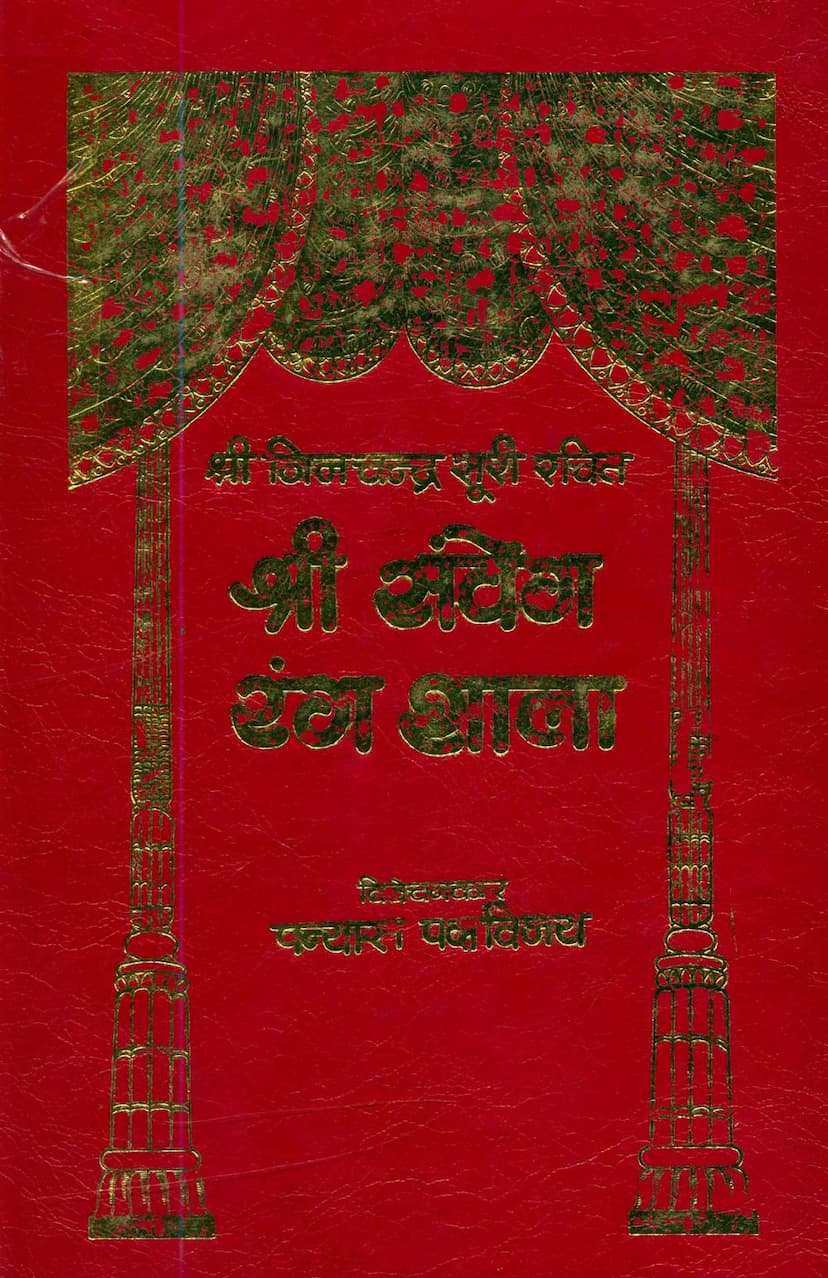Samveg Rangshala
Added to library: September 2, 2025

Summary
Here is a comprehensive summary of the Jain text "Samveg Rangshala" by Acharya Jinachandra Suri, translated by Pt. Padm Vijay, and published by Shri Nirgranth Sahitya Prakashan Sangh:
Overall Purpose: "Samveg Rangshala" (The Arena of Dispassion) is a profound Jain scripture that aims to elucidate the concept of "Samveg," considered the highest of all virtues. The text emphasizes that all righteous actions (Samveg Sahit Sarva Kriya Samyag Kriya) are rendered fruitful by Samveg, and without it, even strenuous austerities, sacrifices, and rituals are rendered futile. Samveg is essentially the taste for the pure nature of liberation, an ardent desire for Moksha, making it the seed of the path to liberation.
Key Themes and Structure: The book is structured to guide the reader towards the attainment, preservation, and growth of Samveg. It promises to transform even the hardest hearts with its profound teachings on detachment and the transient nature of worldly existence. The text is divided into four main sections:
- Parikarma Vidhi (Method of Preparation): This section likely deals with the foundational practices and principles necessary to cultivate Samveg.
- Pargan Sankraman (Transition of States): This section probably focuses on the process of moving from one state of existence to another, particularly transitioning from the cycle of birth and death to liberation.
- Mamtva Vicchedan (Severing of Attachment): This section is dedicated to the essential practice of detachment from worldly possessions, relationships, and self-identity, which is crucial for spiritual progress.
- Samadhi Labh (Attainment of Equanimity/Concentration): This final section deals with achieving a state of mental tranquility, concentration, and equanimity, culminating in spiritual realization.
Core Concepts and Teachings:
- The Two Arenas: The text contrasts the "Sansaar Rangshala" (Arena of the World) with the "Samveg Rangshala" (Arena of Dispassion). The former is driven by the "King of Delusion" (Moh Raja) and characterized by attachment, aversion, and the illusion of happiness. The latter, guided by "King of Dharma" (Dharm Raja) and exemplified by Tirthankaras and Gandharas, leads to liberation.
- The Nature of the World: The world is described as an immense and paradoxical stage where souls, through countless cycles of existence, have embodied every conceivable role – king, beggar, animal, god, etc. The soul, blinded by delusion, forgets its true nature, mistaking suffering for happiness.
- The Role of Tirthankaras: Tirthankaras, witnessing the plight of souls in the worldly arena, extend their compassion to liberate them from the bonds of delusion. They guide beings from worldly attachment to spiritual bliss, transforming them from ordinary individuals to enlightened beings. This establishment of the "Jin Shasan" (Teaching of the Jinas) is the true Samveg Rangshala.
- Definition of Samveg: The word "Samveg" is derived from the prefix "Sam" and the root "Vij," meaning agitation, excitement, rapid movement, or pain. In a spiritual context, it signifies an intense longing and agitation for Moksha, an eagerness to attain liberation. It is defined as the constant fear and awareness of the suffering and impermanence of the world.
- The Power of Samveg: Attaining Samveg transforms a soul, making it a "Mumukshu" (seeker of liberation). Such a soul perceives the world as an illusion, material possessions as ephemeral and joyless, and recognizes the pervasive suffering, impurity, and delusion within the cycle of existence.
- The Importance of Scripture and Practice: The text highlights the necessity of studying scriptures that elaborate on Samveg, along with the practice of virtues like Nived (disenchantment) and self-control. It is stated that even extensive knowledge and practice of austerities are fruitless without Samveg.
- The Essence of Sadhana: The true essence of prolonged spiritual discipline, including self-control and austerities, is the manifestation of Samveg. Even a fleeting moment of Samveg is deemed more beneficial than arduous external practices without it.
- The Role of Guidance: The text underscores the importance of virtuous conduct, knowledge, and the guidance of spiritual preceptors (Gurus) in developing Samveg.
- The Four Departments of Sadhana: The book is organized into four primary sections: Parikarma Vidhi, Pargan Sankraman, Mamtva Vicchedan, and Samadhi Labh, each containing numerous sub-sections and illustrative stories.
- Illustrative Narratives: The scripture extensively uses allegorical stories and narratives of past lives of great souls (like King Mahasen, Sukausik Muni, Marudeva Mata, Chitraketu, Indradatta's son Surendradatta, Angarmar Muni, Vidya Dhar King Vanveg, King Maduraja, Sukausal Muni, Vankchul, Rudra's disciple, Haridatta Muni, and Vankchul's tale of loyalty and betrayal) to illustrate the principles of Samveg, detachment, and righteous conduct. These stories often highlight the consequences of attachment, delusion, and the rewards of perseverance in spiritual practice.
- The Importance of Right Knowledge and Action: The text repeatedly stresses the interconnectedness of knowledge (Gyan) and action (Kriya). True spiritual progress comes from the harmonious integration of both, where knowledge guides action, and action reinforces knowledge.
- The Four Pillars of Spiritual Pursuit: The text implicitly or explicitly points to the importance of Samyak Darshan (right faith), Samyak Gyan (right knowledge), Samyak Charitra (right conduct), and Samyak Tap (right austerity) as the pillars of spiritual progress, with Samveg being the driving force behind them.
Key Figures and Authorship: The text is attributed to Acharya Jinachandra Suri, a prominent Jain scholar and ascetic. The translation and Hindi rendition were done by Pandit Padm Vijay, a disciple of Acharya Vijay Purnanand Suri, who was in turn a disciple of Acharya Vijay Lalit Suri, a successor of Acharya Vijay Vallabh Suri. The publication was facilitated by Shri Nirgranth Sahitya Prakashan Sangh. The preface acknowledges the contributions of various individuals involved in the translation, editing, and publication process.
Overall Message: "Samveg Rangshala" is a comprehensive guide for spiritual aspirants, offering practical advice, philosophical insights, and inspiring stories to cultivate dispassion and achieve ultimate liberation. It serves as a manual for navigating the complexities of the spiritual path, emphasizing the transformative power of renunciation and the unwavering pursuit of Moksha. The text is a testament to the rich tradition of Jain literature and its emphasis on inner transformation and ethical living.